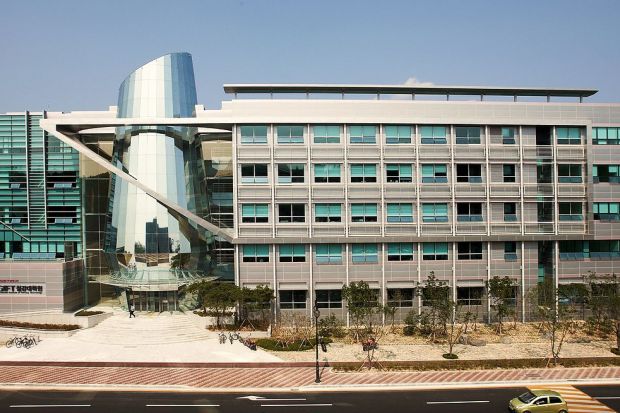POSTECH: Silencing Vibrations in the Ground and Sounds Underwater
Metamaterials that can control the refractive direction of light or absorb it to enable invisible cloaks are gaining attention. Recently, a research team at POSTECH has designed a metasurface that can control the acoustic or elastic waves. It is gaining attention as it can be used to escape from threatening earthquakes or build submarines untraceable to SONAR.
Professor Junsuk Rho of POSTECH’s departments of mechanical engineering and chemical engineering and Ph.D. candidate Dongwoo Lee of the Department of Mechanical Engineering in collaboration with Professor Jensen Li of HKUST have designed an artificial structure that can control not only the domain of underwater sound but also of vibration. The research team has presented an underwater stealth metasurface independent from SONAR by controlling the acoustic resonance to absorb the wave. They also confirmed that the wave propagation through a curved plate, such as vibrations, can be drastically altered; and have presented a methodology that can actually achieve the cloaking effect with singularity of infinite refractive index, which has been considered impossible to demonstrate until now. These research findings were recently published in Journal of Applied Physics and Physical Review Applied, respectively.
When light encounters a substance in nature, it generally refracts in the positive (+) direction. Metamaterials can design this refractive of light as a negative (-) direction, a zero refractive index (0) that allows complete transmission, or a complete absorber. This is the reason why things look transparent when they encounter metamaterials.
The research team theoretically confirmed a metasurface that can significantly absorb sound waves without reflecting them by tailoring the resonance of sound. Through layers of split-orifice-conduit (SOC) hybrid resonators, a thin metasurface was designed to absorb sound waves in broadband (14 kHz to 17 kHz). The metasurface designed this way can achieve underwater stealth capability untraceable by SONAR, which detects objects using the information between transmitted and reflected waves.
The research team confirmed that it is possible to transmit or change the direction of elastic waves – like seismic waves – according to the design of curved plates. Applying Albert Einstein’s general theory of relativity which states that the path of light changes in the warping of space-time due to the change in the gravitational field caused by mass, the research team proposed a platform capable of extremely controlling elastic waves on a curved plate. As an example, a refractive index singularity lens, which is a metasurface lens that approaches near-zero thickness, is implemented to demonstrate an elastic version of Eaton lenses that can be bent at 90 and 180 degrees in the broad frequency range (15 kHz to 18 kHz) on thin curved plates.
In addition, by proposing a methodology that can actually implement the cloaking effect in which the singularity exists in theory, it is expected that extreme celestial phenomena such as black hole enabled by gravitational fields can be explored as a test bed in the elastic platform in the near future. Based on this understanding of the singularity of refractive index, it is anticipated to enable technologies that protect nuclear power plants or buildings from earthquakes or to control wave energy generated when tectonic plates collide or split.
“Until now, metamaterial research has focused on light and electromagnetic waves, but we have confirmed that it can be applied to sound waves and seismic waves,” remarked Professor Junsuk Rho, renown worldwide for his research on metamaterials. “We anticipate that it will be applicable to building untraceable submarines or nuclear power plants that can stay intact even during earthquakes.”
This research was conducted with the support from the K-Cloud grant of the Korea Hydro & Nuclear Power Co., Ltd. the Global Frontier Program, the Mid-career Researcher Program, and the Regional Leading Research Center program of the National Research Foundation of Korea and the Global Ph.D. Fellowship funded by the Korean Ministry of Education.

